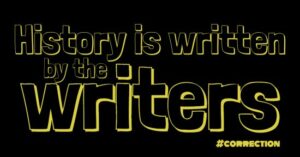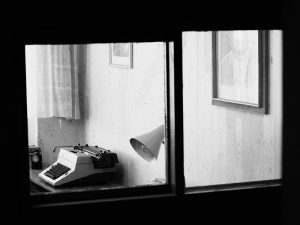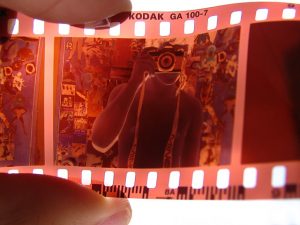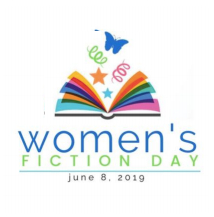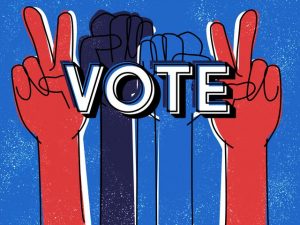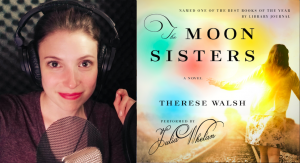Posts by Therese Walsh
While I don’t recall how exactly I learned about Save the Cat!–a book marketed primarily to screenwriters–I’ll never forget reading it for the first time, that sense of “Oh, yes; this author has tapped into something new and fundamentally true about story.” That author, Blake Snyder, agreed to an interview with me for Writer Unboxed in 2008, and while you can read the whole thing here today, what you might not come away with are things that stand out in my memory about that conversation. First, it was a conversation, and so I was able to hear Blake’s tone of voice, his kind and easy manner, his laughter. I didn’t include all of the times he thanked me for an insight or question, but he was genuinely grateful to be heard and humbled that his ideas were being explored seriously. He was also so generous with his time–time that was, unbeknownst to anyone, running short. When he passed away suddenly the following year at the age of 52, the wider writing community lost a guru and friend.
Fast forward to today: Blake’s Save the Cat! is known all over the world, referenced with the ease of a blue sky by writers everywhere, and is taught at the best film schools in the country. (My son just completed film school at USC, and so I promise you it’s true!) Blake’s books and concepts live on, and in fact his franchise has thrived and grown and even been thoughtfully adapted for novelists via a book written by Jessica Brody (Save the Cat! Writes a Novel). I’m cheered to know that Blake’s ideas have become a meaningful legacy for writers of all stripes, and are behind countless completed, purchased, and successful stories–films and novels alike.
Later, I’ll review an extension of Blake’s legacy: an online course and a set of cards meant to help storytellers craft a narrative from first beat to last. [Click HERE for that review.] Until then, I hope you’ll enjoy my vintage interview with the late, great Blake Snyder.
Interview with Blake Snyder
TW: In the first Save the Cat, you introduce the idea that every story falls into one of ten new genre categories–Monster in the House, Golden Fleece, Out of the Bottle, Dude with a Problem, Rites of Passage, Buddy Love, Whydunit, Fool Triumphant, Institutionalized or Superhero. How does your latest book, Save the Cat Goes to the Movies, expand on this concept? And in what other ways are the books different?
BS: In the first Save the Cat, I proposed that most well-structured stories fall into certain patterns. I pointed out fifteen points on the Blake Snyder beat sheet that I think are unique.
What I’m trying to get across is that there’s a function for every section of a story. As a writer myself, I’ve spent a lot of time trying to figure it all out. I’ve been lucky in that I’ve had a lot of success in selling scripts, and so breaking down the components of what makes any story work has always been my goal. That was the important thing in the first book.
The other important thing in the first book was the concept that there are ten story types. […]
Read MoreI was asked to write something to mark the day—something to encourage a re-set as we turn the proverbial page on a difficult and divisive chapter in American history. But the truth is that I don’t know with certainty what this day will bring. I’m not writing this piece on January 20th, and at this point several outcomes seem possible, ranging from peaceful ideal to horrific.
What can be said of such a day, when so many different outcomes are imaginable?
It struck me that we give our protagonist a moment like this toward the end of a story—following a dark moment, there is resolution or there is an even darker moment.
It struck me that no matter what our protagonist experiences, there is an after, whether it’s happily-ever or not.
It struck me that we are—collectively—the protagonist of this moment in history.
Some believe something will end today. Period. But I think it’s safer to say something will change today; it will shift, marking the start of a new phase or chapter [semi-colon].
The semi-colon is a powerful marker of connection. Two ideas are so intrinsically bound that to exist as sentences beside one another without the marker is to weaken the idea. Whatever comes next, whatever happens today, it will be the cause of an effect we won’t know for a while. But make no mistake that our future—at least our most immediate future—will be tied to our now in a way we won’t be able to shake.
This is a semi-colon moment.
What do we do with the rubble of our time? How do we rebuild? What can be salvaged? What do we take from this moment and pull into our future? What’s on the other side of that semi-colon? What do we want to be on the other side of that semi-colon? To undo it all, to go back to “normal”? How wide is that gap, between reality and some impossible dream?
What can we control? Where is our personal power? How can we navigate the noise to remember our singular selves—our hopes and aspirations—and set ourselves back on the road to home? Are we prepared to find that the ground has shifted while we were away, that our homes are not where we left them, that the things inside are not as we remember them, that some things have broken while others have disappeared altogether?
We will, on the other side of this, be called to stitch together a new sense of safety—a proverbial net we can rely on, that will be there for us if we need to fall. We can’t find the needles, the thread. We’ll have to improvise. We may learn that this new net, though, is stronger than anything that has come before–a strange net made out of desperate materials, flecked with our own blood, perhaps, as we crafted it with some brave-new-world instrument that was imperfect, that we’d never used before because we’d never had a need.
There may be grief for the old world—the world on the left side of the semi-colon—but make no mistake that the new world cannot live in that same space. The world on the new side of that semi-colon is waiting for us, and its message remains hidden for now. It needs our voices, and […]
Read MoreIt’s time for WU’s annual hiatus, but I didn’t want to close the year without taking a minute to reflect on what has been and what will come next.
This has been a hard year for many of us. Some have lost loved ones, others have lost jobs. Many of us have experienced a level of sustained stress we’re unaccustomed to living with, which has impacted our ability to focus on creating. If you’ve felt disappointment in your output this year, please join me in cutting us all some collective slack. This has been a long moment. But this, too, shall pass. And something that Porter Anderson wrote yesterday deserves a second time in the spotlight here:
[My] wish for you is that you have the luck to work your way into 2021, as you see fit. May the work help you feel grounded and in touch with progress. May it be something you remember to return to when you’re scared. And may you demand your best work of yourself precisely when things are darkest.
Hear, hear.
Looking Forward to 2021
Several of our contributors will have books releasing in 2021, including some with debuts–including Nancy Johnson and Julie Carrick Dalton! We’ll be celebrating many of these releases via interviews scattered throughout the year, running–in most cases–the Sunday before their release days. I’m sure they’d all appreciate the support through comments, social media shares, and naturally through purchases and reviews of their books. (If you have book releases planned for 2021, let us know in comments!)
A few of our long-time contributors have made shifts this past year, stepping down from frequent postings to less present positions, which means we’ll be introducing you to some new voices in 2021. We’re excited to bring these new folks onto the team, and we look forward to getting to know them throughout the year along with you.
Last but not least, I want to take a moment to congratulate contributor Arthur Klepchukov on his video Aisles of Ideas, which was awarded 3rd place in the Library Film Festival! He’s allowed us to share this 2-minute book-celebrating gem here:
Read MoreRecently, a friend posted a note on social media: Tell me something good about 2020. “That it will eventually come to an end,” I commented, to be witty but also brutally honest–and that was before my county posted record levels of new covid cases this past week. Of course there have been some genuinely good things about 2020 that I’m grateful for–bursts of joy that take me away from the gloom of our time, like the bluebird family we fed this summer. And it hit me recently that the chaos of 2020 offers a pretty big gift, too, especially for writers.
Let me back up a second.
I’ve been working on an extensive metaphor about human behavior and how it can be applied to fictional characters for going on a decade, and taught a 90-minute class about it at the last UnConference and at a Writer’s Digest conference. It’s about the territory a character traverses throughout the course of a novel, beginning in their center, where they likely are at the start of a story, and ranging out, beyond their comfort zones, into uncharted territory and eventually to–and perhaps even over–the edge. Imagine it like an expanse of land:
In the metaphor, the closer a person gets to the edge, the less predictable the outcome because that person’s will is less likely to impact an outcome. When a character goes over the edge, things are genuinely unpredictable, because chaos is in charge.
The nature of chaos is also important to keep in mind. It doesn’t have values, doesn’t have a center or family or anything to care about or remember. It simply is the sea and its many storms.
To tap into that edgy place in the class, I might ask participants to “Consider something you’ve done that you regret, that you would not do again.” The question should lead you to recall a time when you were close to or completely out of control–right at the edge or over it, with your feet barely clinging to their grip of the land or already wet with water.
Most novels bring us to one of two scenarios:
Read More
Time and again over the last few years we’ve heard it, thought it, felt it: “History is being made, right now.” Meaning, the sort of history that becomes far more than a footnote in a future book on this decade. The sort of history that becomes its own library of books, not only because it is prominently newsworthy in its day but because it marks a turning point or new precedent, or its ramifications will have ramifications on ramifications. This is such a tentacled moment, and in a sea of other tentacled moments you may not know what I mean, so let me be clear: I’m speaking of the murder of George Floyd on May 25th in Minneapolis, and the element that made his death–and the deaths of countless other Black Americans–part of a much larger picture of racism in this country.
“[H]istory is written by the winners,” attorney general William Barr recently said of another subject, and an LA Times article pushed back: Writers across the board hold power in documenting the truths of their time.
My mother-in-law, with a passion for genealogy, recently did a deep dive into my family history. One of the many gems she unearthed was an opinion piece that my grandmother wrote in 1965 about “[t]he recent horrible beatings and murders in Alabama over civil rights and the basic right of every American citizen to register and vote…” I feel such pride reading her letter, and I’m so very glad that she took the time to document her thoughts, that she troubled to see her letter published, and that the press obliged. It’s history that reveals herstory. I know how she’d feel about what is going on in this country now. I know what she’d say. I think I know what she’d write.
Not everyone is comfortable with politics, and I’m not here to shame the silent. But I am here to highlight some who’ve chosen to add their voices to this moment, to help record and hopefully shape the history of now, and to show how many ways this can be done.
I’m beginning with WU contributor and friend Nancy Johnson, whose Facebook post resonates with power, and then will follow with other posts that showcase the various ways writers are using their platforms, from documenting the moment to amplifying the messages of others. In some cases, you may need to click through to read a full message, but all posts are public.
https://www.instagram.com/p/CA14bjXg3Nr/?igshid=1xx3776nobn7o
Everything can change in an instant. Most of us are living examples of that right now, as COVID-19 ravages the world and its people. So while I had another post planned for today–one about the essentiality of story at a time like this–I want to do something more personal. Something different.
I want to know how you are.
Where you are.
What you’re doing.
How things are different.
How things are the same.
I want to know if you’re writing.
If what you’re writing has changed.
If you feel inspired to write something else.
What that might be.
I want to know that you’re okay.
I want you to know that you’re not alone.
I want everyone who reads this to leave a comment, and for us to gather and share and know we have one another right now, even if it all feels so damned tenuous.
It is. Life is.
For me, my days haven’t changed overmuch, at least not on the surface of things. I spend my time at home, writing one thing or another, or reading one thing or another. But now I do that with my husband working nearby as well. I’ve been trying to connect more deeply to my work-in-progress, to use it for a dearly needed escape from reality. Results are mixed but I’m committed. When I start my day reading or listening to the news, I lose hours of productivity, and so I’m trying to make changes to my routine, though it’s hard not to seek those updates. There are more texts and calls from friends and family, too–checking in, worried, anxious. Sometimes I am bizarrely calm. Other times, filled with dread. But I’m okay, we’re all okay, and we’re being as careful as can be.
Before I turn things over to you, I’d like to leave you with this final thought:
Things will be different on the other side of this crisis, in ways known and unknown to us. We won’t be able to control much of that–most of that. But we can control some of that. The gift of chaos is in the ability to create a new order from its leavings. We can see from our place in the eye of the storm just what’s most important to us, and recommit to making those things a priority. We can choose not to return to the way things were, if the way things were wasn’t getting us where we wanted to go. We may think about our dusty dreams, and decide to dedicate ourselves to them wholeheartedly. It was directly after 9-11, when the message of life’s too short resonated most loudly, when I started to write what eventually became my debut novel.
Something wicked this way has come, but there will be an after.
Read MoreIf you want your characters to seem like real people, they must present on the page as more than tokens that run through a plot point obstacle course. You already know, I’m sure, that real people are complex. They don’t always know who they are or what they want or why they behave as they do. But you, as a creator, must know these things about your characters.
Allow them to reveal their story as you write; don’t presume to know it all.
Knowing a character in full form before you write your first draft may not be possible, or even ideal. You may want to begin with a moderate understanding of your character—based on a well-considered backstory, and how that intersects with your story’s plot—and then allow them to evolve as you work. There’s a simple truth at play here: When you begin to tell a tale, you may have a skeleton plot worked out on paper or in your head, but there’s no way you have envisioned every turn your story will take, even if you’re a master plotter. And it’s the intersection of your character with these turns that reveal who they are. This is why you can’t fully understand them until you allow them to interact with these moments as you write them.
But what if the character-connection evades you? Is there anything you can do to help things along?
Let them loose on the page. Not every character is going to flesh out easily. For example, if you have a character who is Pollyanna-sunny or even boring, you may have to force them into a corner and see how they react; write that as an exercise, and force them to reveal the breadth of their territory to you in that way.
Try unconventional measures if it means getting inside the heads of quirky or difficult people. I had a quirky character in my second novel who came alive for me in footnotes that I never showed anyone. Her sister on the other hand—a jaded young woman who felt trapped in a life she couldn’t imagine evolving from—spoke to me in haikus: carefully composed with very few words. It was only through these measures that each sister revealed something that I would not otherwise have known.
Once, with a character holding a lot of anger, I let her vent via pages of rants that weren’t meant for the book. I needed to listen to them, though, in order to learn how she viewed her world. (Anger, I find, is often the lingering bruise behind a character’s greatest pain.)
Let them loose off the page, too. In The Velveteen Rabbit, the rabbit had to be let loose in order to shed the label of ‘toy’; only then did he become real. Your characters may become real for you when you let go the label of ‘character’—when you imagine them untethered from your specific plot. Think outside the confines of your story and they may unspool for you.
Brunonia Barry famously inhabits the mindsets of her characters while she’s drafting—eating, traveling, and speaking with others as those characters, sometimes for days at a time—in order to grow a better understanding of who they are. It’s through this exercise that she’s able to authentically channel them […]
Read MoreOnce upon a time, circa 2005 to be exact, an agent suggested that the story I had written wanted to be women’s fiction. I had no real idea what ‘women’s fiction’ meant, and so I set out to learn—and ran into some significant silence. Few articles existed about women’s fiction and fewer were publicly labeled as women’s fiction. But I did find Marsha Moyer, and devoured her novel The Second Coming of Lucy Hatch. I also found Barbara Samuel (now Barbara O’Neal), who wrote many novels, some of which were considered women’s fiction, like The Goddesses of Kitchen Avenue. I reached out to them—both were welcoming and generous—and asked questions. But for every answered question, new issues over this novel-to-me label emerged.
How’s that for non-specific?
Adding to the confusion was this doozy:
But ‘women’s fiction’ also seemed distinct, with stories that detailed significant transformations in the lives of women. In fact, transformative personal change was central to women’s fiction; the stories themselves disintegrated without those arcs. That’s why I decided to rewrite my story as women’s fiction, because the vital arc detailed the emotional evolution of a woman. (That novel did sell, but funnily enough was listed as ‘suspense’ in the Random House catalog, which only serves to emphasize the ambiguity and lack of power the women’s fiction label held in 2009.)
Now, in 2019, there have been shifts in awareness about women’s fiction. While there are still no shelves labeled ‘women’s fiction’ in bookstores—you’ll usually find our books in the general fiction section—there are often appropriate digital tags found online. There are many more explainer articles about women’s fiction to be found via Google. There is an award-winning blog, Women’s Fiction Writers, by Amy Nathan, There is also an organization called Women’s Fiction Writers Association (WFWA), which was founded in 2013 and has fast become a goldmine for writers seeking their tribe, pertinent education, and support for their books.
That group is pushing a new initiative, and that is to create a National day of recognition for this rising genre, to help propel awareness to the next level for readers and writers alike. It’s my pleasure to have with us today the co-founder of that organization, fellow author Orly Konig, to talk about women’s fiction—what it is, how it’s evolving, and what comes next.
Thanks for being with us, Orly! What is your impression of how the landscape for the women’s fiction genre has changed in recent years? Is change, if it’s occurring, slow and steady, or happening at a clip? What do you think is behind any change?
Thank you for having me! I think we’re always seeing shifts in the […]
Read More
It is January 1st, and as I sit in my kitchen writing this, there is a strong wind outside. The bird feeders sway, unsynchronized; leaves I thought were long gone fly around the deck; a plastic saucer lacking a plant lifts briefly into the air before crashing into the glass; and my cat stares warily out the window.
I generally have a forward-looking spirit, but that was dampened in 2018. In 2018, I felt compelled toward stillness — to watch, like my cat, eyeing the chaos outside of the window. Because of that, I’ve thought a lot about chaos — how it has to destroy, sometimes, before it can be an agent of progress and even order. An easy example: Consider the way you have to make a mess before progress can be made in renovating a room or even organizing a closet.
Now consider how we humans naturally resist progress/chaos, because it requires mental and/or physical effort, in favor of comforts like downy things to curl up with, and full bellies, and stillness on the housebound side of the window. Consider how easy it can be to be lulled into a life that doesn’t so much seek change as it seeks to prevent it.
A resistance to change and chaos may not be a bad thing for some people, but I would argue it isn’t the road you’ve chosen, if you’ve chosen to be a novelist. Because you, my writer friend, need chaos to produce your work.
You need the chaos of ideas.
You need a mess of words on the page, and sometimes all over your desk, several tables, and the floor.
You need to be frustrated over that character / plot point / predictable ending, because that discomfiting chaos is what can and will inspire new solutions as you seek a more satisfying relief —
and test your personal limits,
and the breadth of your creativity,
and meet goals,
and imbue your life with a sense of purpose.
But it’s a cycle that demands you step outside of your safe place and twist in the wind.
For You
For Your Characters
Read MoreIt’s Election Day in the U.S., which you surely know unless you’re living under a sound-proof stone that hasn’t been picked up and thrown at someone. Hard to believe that a few short years ago many of us rarely expressed controversial opinions, choosing to be ‘polite’ rather than overtly ‘political,’ yet here we are.
So let’s talk broadly about tipping points for a minute, and tune in to story.
Consider your protagonist’s world view at the start of your tale:
Now think through what it would take, in each instance, for her to change her mind; to be pushed and shoved out of her comfort zone; to be rattled by a proverbial stone against her skull, or even to pick one up herself.
Don’t tell me she would never allow herself to be tipped, because I do not believe it, and if you do, then you need to dig harder, my friend. Identify the wildcard in her life, and if it doesn’t exist, then build it.
Need help brainstorming? Consider the effect of the following:
Lies
Liars
Injustice
Insecurity
Corrupt forces
Threats to her future
Threats to those she loves
Threats to things she loves
Disempowerment
Abandonment
Victimization
Brainwashing
Addiction
Poverty
Cruelty
Hatred
Illness
Abuse
Chaos
Pain
Fear
Don’t make her flip of nature too easy, either, or it will read false.
Consider:
Because if I’ve learned nothing over the last few years, it’s that nothing is sacred. Nothing is solid. Nothing is forever. Nothing can be taken for granted. And that doing nothing and expecting change is not only tantamount to madness but becomes impossible once that tipping point is reached.
Just as we writers must press on and pursue–must write on, and persevere–so […]
Read MoreToday marks the paperback and audiobook release for The Moon Sisters–a book that earned some critical acclaim, but not before nearly dying on the vine, pre-publication. Below is one story behind the story, complete with rising stakes, a ticking clock, a dark moment, and a turning point.
THE SETUP
I had been working on The Moon Sisters for ~4 years, as the publishing ground shifted radically beneath me. The imprint at Random House that had signed me to a 2-book deal had been shuttered, and I had been shuttled to an imprint about to change its mission statement. My original editor was with a different house. My 2nd editor, too, left for a different house. My 3rd editor also left, after providing me with comprehensive editorial notes about a year prior to the start of this tale. My 4th editor, therefore, inherited the story, its old editorial letter, its revision, and its somewhat rattled author.
This is where the story starts.
A WRITER’S GOAL, MOTIVATION & CONFLICT
I received notes from Editor #4 in early March, wherein she kindly acknowledged how far the story had come with regard to Editor #3’s notes, and roundly encouraged the story in many heartening ways. But some important issues remained for her, and as I worked through the letter, I homed in on one gigantic problem:
Editor #4 was not onboard with the PREMISE of the novel, which was, briefly, “Two sisters travel to a cranberry bog in West Virginia to find the end of their recently deceased mother’s unfinished novel.”
Her clarified point, Why should readers care if the sisters get to the bog and meet their goal?, was hard to hear, because I cared about my protagonists and understood their dreams. They were worth caring about.
My goal became to find the proof of it.
RISING TENSION, A TICKING CLOCK & A DARK MOMENT
We all have strengths and weaknesses, as writers and as people. Something I consider a personal strength is being an ‘ideas person.’ I can mentally slide everything onto the bubble, then experiment to see how one aspect or another of my story might be reimagined. I don’t shy away from revisions if they are needed; I completely rewrote my first novel in another genre, for instance, before it sold. But every time I considered a new spin for the premise of this story and visualized how that spin would play out through the end of the book, the narative fell apart at some crucial moment.
Weeks passed, and still I had no workable solution to this problem. Meanwhile, the tick-tick-tick of the clock began to haunt me. I had through July to send in the next draft, and my deadline had already been pushed once. I had to find a solution, and leave myself enough time to execute it. But as night set on one solution-less day after another, a sickening possibility took hold: There may not be a solution, and the book might never be published.
AN IRONIC ASIDE
Maybe you’re thinking, “How ironic! The story is about finding the end of this dead author’s story, and this author thought she was going to die trying to figure out how to save her own story.” Mmhmm. The Moon Sisters is, at root, a story about a journey to preserve hope, […]
Read MoreMy second novel, THE MOON SISTERS, comes out in paperback in two days. It also comes out in audiobook, and I feel so lucky; actress Julia Whelan delivered a beautiful performance. Julia isn’t just an actress (Once and Again) and prolific audiobook star; she’s also an author. Her debut novel, MY OXFORD YEAR, released this spring and quickly became a favorite with readers. And, yep, she performed the audiobook herself.
I’m thrilled to have Julia here today to talk about audiobook trends, what it takes to produce an audiobook, how she manages all of those voices, indie author considerations, and so much more! (A big HT to the Writer Unboxed Facebook community for offering some great questions when I asked what their inquiring minds wanted to know.)
Because we’re also celebrating THE MOON SISTERS, Julia and I are offering a download code for the book to one commenter who will be randomly chosen on Friday. Good luck!
Therese Walsh: Before we dive in, I have to tell you that I couldn’t be happier with the final version of The Moon Sisters. I was surprised at how affected I was to hear the performance of a story I know so well. I laughed, I cried, and I listened to the book twice in a row. But the job of the listener, even if that listener is the author, is easy. Was the process of recording the book challenging in any way for you—the accents, the letters, the sibling battles, the format, etc…? And—one of my favorite questions: Team Jazz or Team Olivia?
Julia Whelan: Thank you! I actually decided to do something for The Moon Sisters that I’ve only done with one other book before (Stacey Jay’s The Princess of Thorns). Instead of recording it straight through, I read all of Jazz’s sections and then all of Olivia’s and then I went back and did all of Beth’s letters. For me, it made the most sense. I wanted to make sure I stayed in each sister’s voice so that the listener could truly have a distinct listening experience. Going back later and putting everything in the right order was a bit of a challenge, but I think it made the recording process itself much smoother.
Ooh, that’s a tough one. Personally, I identify more with Jazz. The responsible one, the realist. Some might call her pessimistic, but I wouldn’t. Plus, Olivia could turn anybody into an older sister. :-)
TW: This is true.
There are times when I’ve loved a physical book so much that I’ve purchased the audiobook after reading it just to hear the story performed. As a narrator and actor, are you able to simply read a physical book or is some part of you always acting it out? Have you ever pursued a job because you had to narrate the book?
JW: I love reading books just to read them. Alas, that doesn’t happen very often. But when I do, it’s hard to break the habit of prepping. For the first hundred pages or so I find myself reaching for a pen when I see a word I don’t know how to pronounce or noting a character’s vocal description before I remember I’m off the clock! There […]
Read MoreA number of months back, I wrote an article on how to promo preorder books for Bookbub. The original piece was pared back a little, but today’s post is the whole enchilada. Enjoy!
For a traditionally published author, a hefty number of preorders can increase a print run and create a sense of excitement around a new release. Early buzz may convince the publisher’s marketing team to take a book more seriously, and invest more time, creative brain-power, and marketing dollars into nurturing a potential bestseller.
For a self-published author, a swell of preorders can trigger algorithms that wake retail sites like Amazon to your book’s presence. This makes it more likely that a book will appear in “hot new release” lists, which can increase not only preorders, but post-publication sales and even name recognition.
Finally, because many retailers count preorders on release day, a large number of preorders can land an author on a bestseller list, whether traditionally or self-published.
However, preorder marketing efforts don’t always guarantee preorder sales. When promoting a book, there are so many factors at play: the uniqueness of a book, whether it’s a series or standalone, the dynamic of the author’s platform, the promotional budget, the author’s marketing prowess, and more.
Regardless, the months before a book releases are golden for creating awareness. First, let’s cover how to set up a preorder for success.
PRE-PRE-RELEASE CONSIDERATIONS
Before you spend time and money marketing a preorder, clean up the online hotspots your future readers will visit most often.
“It’s amazing how many authors will have 17 different font sizes on their Amazon page, put reviews in the description section and the book’s description in the reviews section, and it matters. Readers rely on the book’s Amazon page more than any other source, and since a decision to preorder a book is dependent on what happens when a reader gets there, you need to make sure it looks professional, and has an excerpt and well-written book description.”
— M.J. Rose, NYT bestselling author and creator of AuthorBuzz
Pro Tips:
Compare your content to that of bestselling authors in your genre, including the layout, type-sizes, photos, etc.
Also, be sure to claim your books. It’s a step that many authors miss, and one you’ll need to take on retail and book discovery sites. (Learn how to find and claim your book on BookBub HERE.)
SIX MONTHS UNTIL RELEASE DAY
Now it’s time to hone your preorder marketing strategies. Ideally, you’ll have 3-6 months before your […]
Read More




